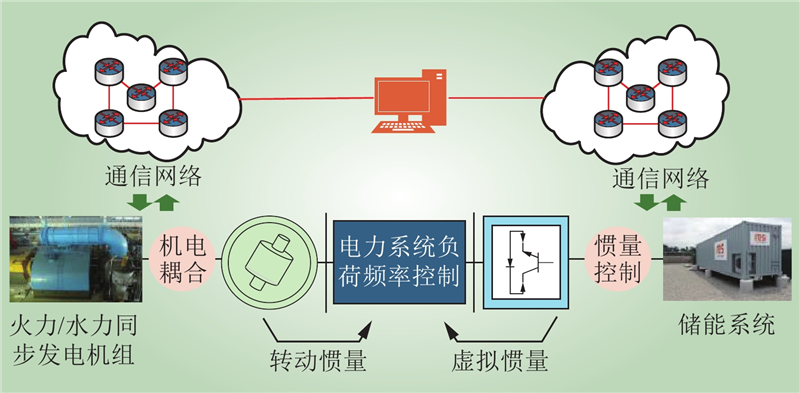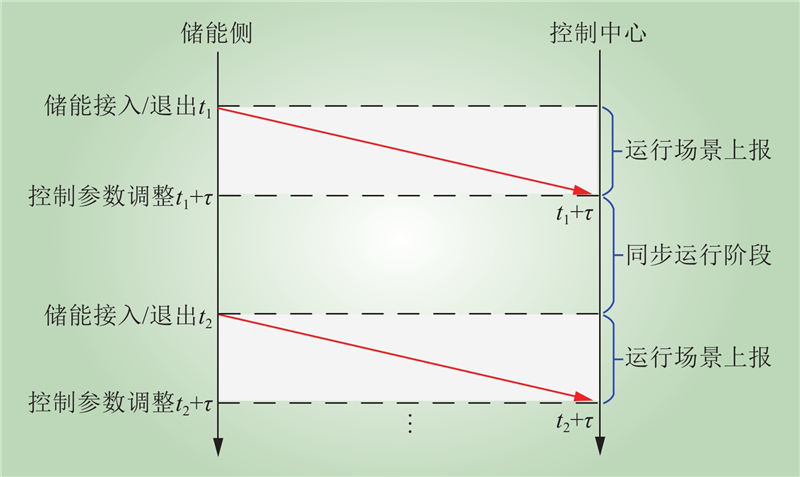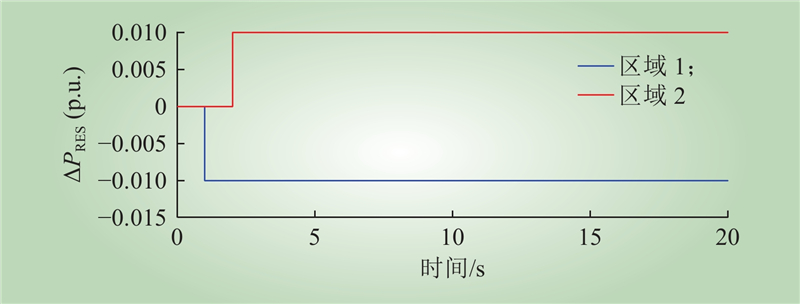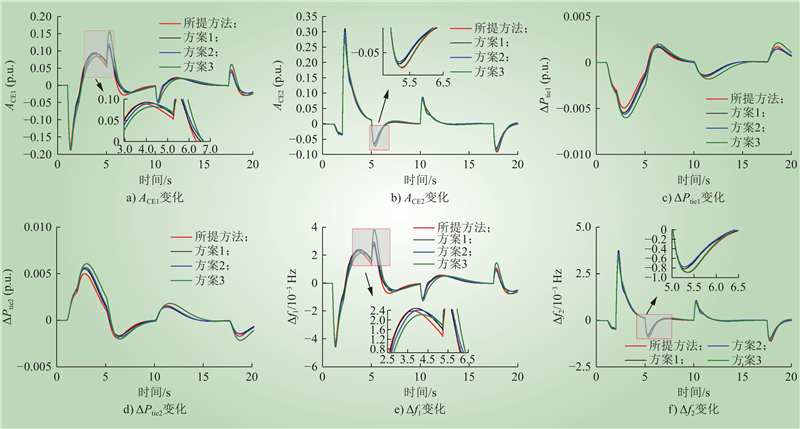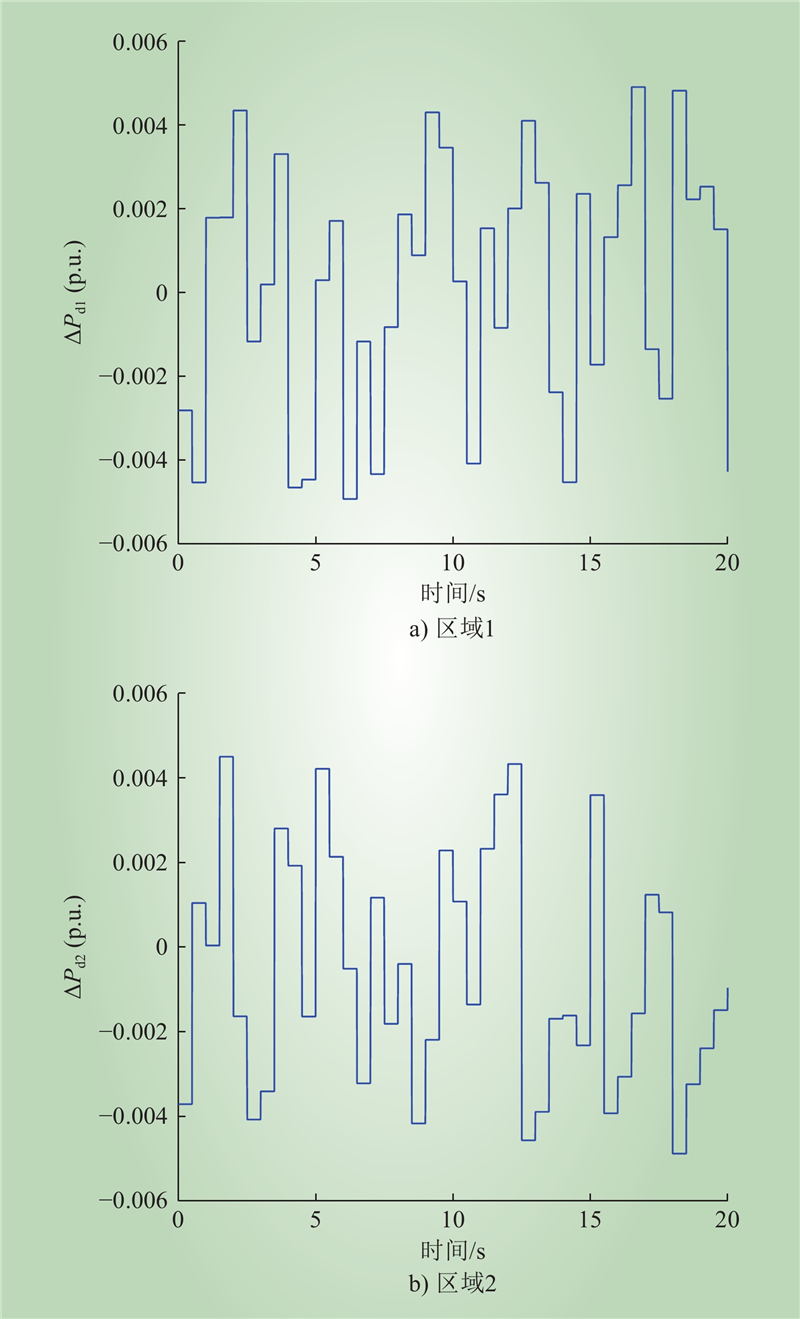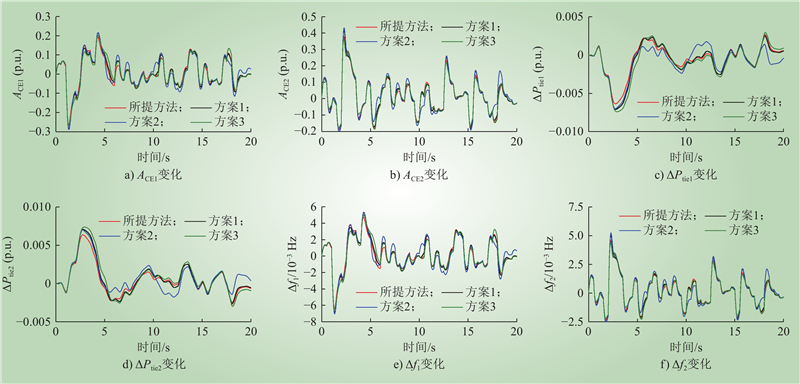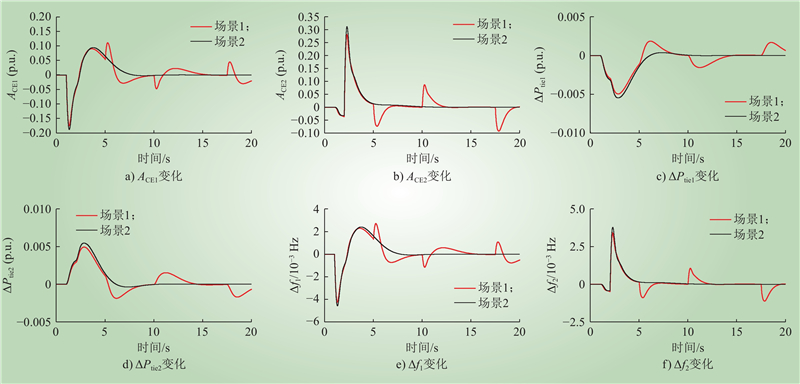| 1 |
宁静波, 黄媛, 唐志远, 等. 基于系统模型在线估计的微网频率预测控制[J]. 电力建设, 2024, 45 (7): 68- 75.
|
|
NING Jingbo, HUANG Yuan, TANG Zhiyuan, et al. Model predictive control-based frequency control with recursively estimated system model for microgrids[J]. Electric Power Construction, 2024, 45 (7): 68- 75.
|
| 2 |
薛飞, 李宏强, 田蓓, 等. 储能辅助的孤岛微网自适应事件触发二次调频策略[J]. 中国电力, 2023, 56 (9): 196- 205.
|
|
XUE Fei, LI Hongqiang, TIAN Bei, et al. Adaptive event-triggered secondary frequency control in islanded microgrids with auxiliary energy storage systems[J]. Electric Power, 2023, 56 (9): 196- 205.
|
| 3 |
贾依霖, 郝睿, 郭力滔, 等. 典型工业负荷参与频率响应的最优申报容量确定及其控制策略设计[J]. 电力建设, 2024, 45 (9): 89- 99.
|
|
JIA Yilin, HAO Rui, GUO Litao, et al. Optimal declared capacity model and operation control strategy for typical industry load participating in frequency response[J]. Electric Power Construction, 2024, 45 (9): 89- 99.
|
| 4 |
方仍存, 桑子夏, 刘知行, 等. 基于改进协同量子粒子群算法的多微网负荷频率控制[J]. 电力建设, 2023, 44 (7): 87- 97.
|
|
FANG Rengcun, SANG Zixia, LIU Zhixing, et al. Load-frequency control of multi-microgrid systems based on improved cooperative quantum-behaved particle swarm optimization[J]. Electric Power Construction, 2023, 44 (7): 87- 97.
|
| 5 |
刘威鹏. 模型预测控制在风电场调频调压中的应用研究[D]. 济南: 山东大学, 2021.
|
|
LIU Weipeng. Studies on application of model predictive control to wind farm frequency and voltage regulation[D]. Jinan: Shandong University, 2021.
|
| 6 |
任羽纶, 严道波, 赵红生, 等. 基于极端天气情况的风-储系统平抑控制策略[J]. 智慧电力, 2022, 50 (2): 29- 34, 41.
DOI
|
|
REN Yulun, YAN Daobo, ZHAO Hongsheng, et al. Smoothing control strategy for wind-energy storage system under extreme weather conditions[J]. Smart Power, 2022, 50 (2): 29- 34, 41.
DOI
|
| 7 |
赵熙临, 龚偲立, 徐光辉. 耦合储能参与度的多目标优化负荷频率控制方法[J]. 现代电力, 2023, 40 (4): 554- 561.
|
|
ZHAO Xilin, GONG Sili, XU Guanghui. Multi-objective optimization load frequency control method based on coupling the participation of the battery energy storage[J]. Modern Electric Power, 2023, 40 (4): 554- 561.
|
| 8 |
刘鑫屏, 刘磊. 基于调频信号自适应分解的电池储能辅助二次调频控制策略[J]. 动力工程学报, 2024, 44 (4): 590- 598, 631.
|
|
LIU Xinping, LIU Lei. Battery storage energy assistance auxiliary secondary frequency regulating control strategy based on adaptive decomposition of frequency regulation signals[J]. Journal of Chinese Society of Power Engineering, 2024, 44 (4): 590- 598, 631.
|
| 9 |
张小莲, 覃世球, 张仰飞, 等. 考虑储能荷电状态的风储联合调频控制策略[J]. 高电压技术, 2023, 49 (10): 4120- 4130.
|
|
ZHANG Xiaolian, QIN Shiqiu, ZHANG Yangfei, et al. Wind turbine and storage joint frequency modulation control strategy considering energy storage state of charge[J]. High Voltage Engineering, 2023, 49 (10): 4120- 4130.
|
| 10 |
LIU X H, LIANG Y R, QIAO S W, et al. Active fault-tolerant load frequency control for multi-area power systems with electric vehicles under deception attacks[J]. IET Control Theory & Applications, 2024, 18 (1): 109- 124.
|
| 11 |
KIM H, ZHU M H, LIAN J M. Distributed robust adaptive frequency control of power systems with dynamic loads[J]. IEEE Transactions on Automatic Control, 2020, 65 (11): 4887- 4894.
DOI
|
| 12 |
鲁志远, 刘世林, 范保程, 等. 含广域混合储能互联电力系统的负荷频率控制[J]. 电力科学与技术学报, 2023, 38 (6): 96- 104.
|
|
LU Zhiyuan, LIU Shilin, FAN Baocheng, et al. Load frequency control of interconnected power system with wide-area hybrid energy storage[J]. Journal of Electric Power Science and Technology, 2023, 38 (6): 96- 104.
|
| 13 |
高强, 杜子钰, 吉月辉, 等. 拒绝服务攻击下互联多区域电网系统的弹性负载频率控制[J]. 电力建设, 2023, 44 (4): 54- 62.
|
|
GAO Qiang, DU Ziyu, JI Yuehui, et al. Resilient load frequency control for multi-area interconnected power system under denial-of-service attacks[J]. Electric Power Construction, 2023, 44 (4): 54- 62.
|
| 14 |
房方, 刘渝斌, 王冰玉, 等. 基于NSGA-Ⅱ的飞轮-火电联合二次调频最优负荷分配策略[J]. 电力系统自动化, 2024, 48 (12): 79- 88.
DOI
|
|
FANG Fang, LIU Yubin, WANG Bingyu, et al. Optimal load allocation strategy of flywheel-thermal power coordinated secondary frequency regulation based on non-dominated sorting genetic algorithm-Ⅱ[J]. Automation of Electric Power Systems, 2024, 48 (12): 79- 88.
DOI
|
| 15 |
钱伟, 孙晓彤, 费树岷. 可再生能源高渗透下时滞孤岛微电网的负荷频率控制[J]. 电网技术, 2024, 48 (2): 630- 640.
|
|
QIAN Wei, SUN Xiaotong, FEI Shumin. Load frequency control of islanded microgrids with time-delay under high penetration of RESs[J]. Power System Technology, 2024, 48 (2): 630- 640.
|
| 16 |
丁瑞森, 杨飞生, 付远超, 等. 混合攻击下基于带宽感知型事件触发机制的负荷频率控制[J]. 中国科学: 信息科学, 2024, 54 (12): 2828- 2840.
DOI
|
|
DING Ruisen, YANG Feisheng, FU Yuanchao, et al. Load frequency control based on bandwidth-aware eventtriggering mechanism under hybrid attacks[J]. Scientia Sinica (Informationis), 2024, 54 (12): 2828- 2840.
DOI
|
| 17 |
黄磊. 基于LMI的时滞系统的分布式H∞负荷频率控制[J]. 电气自动化, 2023, 45 (5): 20- 22, 26.
DOI
|
|
HUANG Lei. Distributed H∞ load frequency control for time-delay systems based on LMI[J]. Electrical Automation, 2023, 45 (5): 20- 22, 26.
DOI
|
| 18 |
张亚健, 彭晨, 许东, 等. 蓄意流量攻击下基于确定网络演算的互联电网自适应负荷频率控制策略[J]. 电力系统保护与控制, 2023, 51 (13): 70- 81.
|
|
ZHANG Yajian, PENG Chen, XU Dong, et al. Deterministic networked calculus-based adaptive load frequency control in interconnected power systems considering malicious traffic attacks[J]. Power System Protection and Control, 2023, 51 (13): 70- 81.
|
| 19 |
ZHANG Y J, PENG C, CHENG C L, et al. Attack intensity dependent adaptive load frequency control of interconnected power systems under malicious traffic attacks[J]. IEEE Transactions on Smart Grid, 2023, 14 (2): 1223- 1235.
DOI
|
| 20 |
李建瑞, 胡松林, 岳东, 等. DoS攻击下随机系统的攻击参数依赖型观测器与控制器协同设计[J]. 控制理论与应用, 2023, 40 (6): 986- 994.
DOI
|
|
LI Jianrui, HU Songlin, YUE Dong, et al. Attack parameter dependent observer and controller co-design for stochastic systems under DoS attacks[J]. Control Theory & Applications, 2023, 40 (6): 986- 994.
DOI
|
| 21 |
安夏伶, 刘婷婷, 路俊影. 切换正时滞系统在可容许边依赖平均驻留时间下的稳定性和镇定性[J]. 延边大学学报(自然科学版), 2023, 49 (3): 203- 208, 222.
|
|
AN Xialing, LIU Tingting, LU Junying. Stability and stabilization for switched positive time-delay systems under an admissible edge-dependent average dwell time method[J]. Journal of Yanbian University (Natural Science Edition), 2023, 49 (3): 203- 208, 222.
|
| 22 |
武雪婷, 孙伟, 李沛妍, 等. 基于量子和声搜索算法的可再生能源渗透率组合预测模型研究[J]. 智慧电力, 2024, 52 (9): 49- 55.
DOI
|
|
WU Xueting, SUN Wei, LI Peiyan, et al. Combined prediction model of renewable energy penetration rate based on quantum harmony search[J]. Smart Power, 2024, 52 (9): 49- 55.
DOI
|
| 23 |
党彬, 邹启群, 张滨, 等. 基于HSA-PSO的配电网源-储协同优化控制方法[J]. 中国电力, 2022, 55 (4): 63- 69.
|
|
DANG Bin, ZOU Qiqun, ZHANG Bin, et al. Generation-storage cooperative optimization control method for distribution network based on HSA-PSO algorithm[J]. Electric Power, 2022, 55 (4): 63- 69.
|



